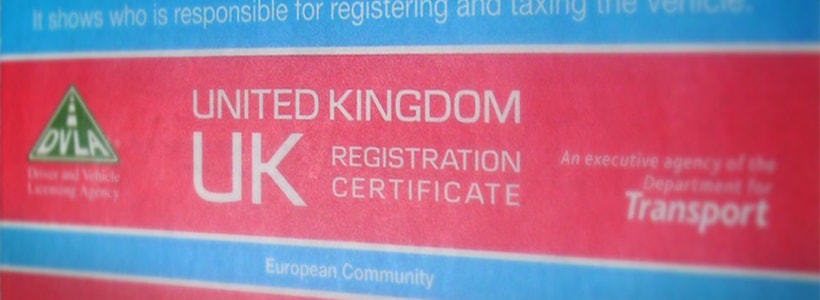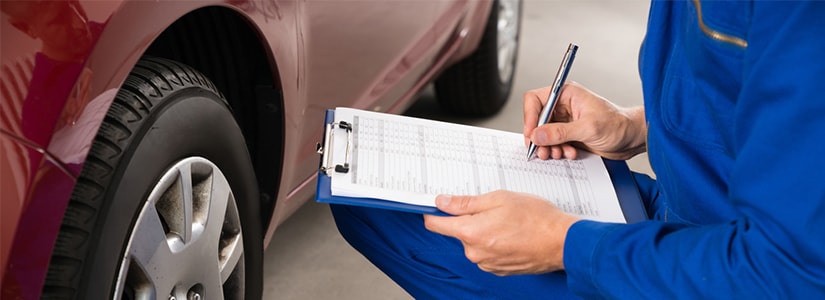
What documents do you need to scrap your car?
27th Mar, 2020
You’ll be glad to hear you don’t need much, so you shouldn’t have to spend too long rooting around in drawers and folders. You’ll probably already know where the most important stuff is already – you’ll need a form of photo ID like your passport or driving licence for example, and those generally don’t go walkabout for long. As well as photo ID though, there are a couple of other bits it’s helpful to have too. Here, we explain what those are in a little more detail!
Your V5C (or your vehicle logbook)
This is one of the most important documents you need, as it proves that the car belongs to you. In fact, the V5C is the document that the DVLA uses to keep track of who owns the car, and any changes to its status. Hundreds of thousands of motorists still lose theirs each year, so in case you’re looking for it, the name can be a bit misleading – it’s not actually a hardback book, but a small four-page paper booklet.
So what does it look like? Well, that depends on how long you’ve had your car. All V5Cs issued before 2012 had blue front covers, but after a large number of blank ones were discovered to have been stolen, all new V5Cs have been issued with red front covers instead, to try and reduce the chances of fraud.
After a review in 2016, the V5C also underwent some design changes, and the newest up-to-date versions have been issued from 15 April 2019. That means if you’ve bought a car since then, you’ll probably have the newest version – the easiest way to tell is to check for one of the most obvious design changes; a multi-coloured guidance section on the front page. However, don’t worry if you’ve got an older version. While the new design will ultimately replace the pre-2019 documents, it doesn’t automatically invalidate them, so you can still use your V5C to scrap your car!
Don’t forget your V5C/3
When you come to scrap your car, make sure you keep the 11-digit reference number from section nine (V5C/3) of the logbook. You’ll need it in order to receive your Certificate of Destruction from the Authorised Treatment Facility (which we’ll go into more detail about below).

The car owner’s manual
The owner’s manual is exactly what it sounds like; basically an instruction booklet or user guide for your particular vehicle. It details basic information about the car (such as its fuel tank and oil levels), and explains how to work basic functions like the clock, air conditioning, heaters and that sort of thing. It can be a lot easier to recognise than the V5C. Statistically speaking, you can recognise it from its pristine appearance, since most drivers rarely touch theirs.
Service history
Again, fairly straightforward – your car’s service history provides extensive or comprehensive records about any repairs or modifications or maintenance work your car has undergone over the years. These records span across not just your time with it, but all previous owners as well. You’ll usually find it in the form of a stamped service book, or a folder of service certificates.
Now, there are two types of service history; a full service history or a part service history. If the records are known to be completely comprehensive, it’s a full service history, and anything else is a part service history. It’s a big reason why it’s a good idea to keep hold of all receipts of any repair work you pay to have carried out on the car – you can hand these over bundled up with the service history. (Unless you want to keep them – but what else are you going to do with them?)

Photographic identifications and car keys
While it’s true that we can scrap your car without a V5C, you’ll find it next to impossible to scrap your car without photographic ID. This is largely due to the Scrap Metal Dealers Act of 2013, which made it mandatory for scrap yards to keep more comprehensive records of each sale, including the personal details of each customer. The idea is that this makes it more difficult for unscrupulous buyers and sellers to get away with trading cars under the radar, cracking down on vehicle crime. Plus, verifying the identity of everyone involved is a good common-sense step when you think about it – especially when selling something as high-value as a car!
You’ll also need your keys because the prices you’ll get for your car will typically be quoted under the assumption that the car has keys available. It’s not a huge problem if you don’t, but be sure to let us know as soon as possible, because we’ll have to make different arrangements for how we collect your car. In the worst case scenario, lots of ATFs may end up taking the extra cost of labour and time out of the price – so trust us, it’s better to double check everyone’s fully prepared ahead of time!
What you’ll get – a Certificate of Destruction
This is another really important step. When your car is scrapped by an Authorised Treatment Facility like our partners here at Scrap Car Network, they’ll provide you with a Certificate of Destruction. We’ve gone into full details in the linked post, but essentially the purpose of this document is to free you from legal responsibility for the car. That means it’s vital to double check what you’re being given, and that you get it promptly (normally within one or two weeks).
The wording is very precise – it’s not a Document of Destruction, or a Certificate of Collection. It’s a Certificate of Destruction, nothing more, nothing less. Don’t be afraid about pushing for it, either – you’re the one legally at risk if it doesn’t arrive! The receipt of a CoD is also proof that the DVLA will refund you any unused road tax, too – yet another reason why it’s so important!
You won’t have to worry about waiting around for it too long when you choose us here at Scrap Car Network, though. We pride ourselves on being highly reputable dealers, and every one of our partners is an Authorised Treatment Facility. If you’d like, you can find out about more reasons to choose us, or if you’re all ready to scrap your car, just enter your car reg and postcode into the fields on our homepage, and we’ll have your instant online quote to you in no time at all. Curious to find out how much your car is worth?